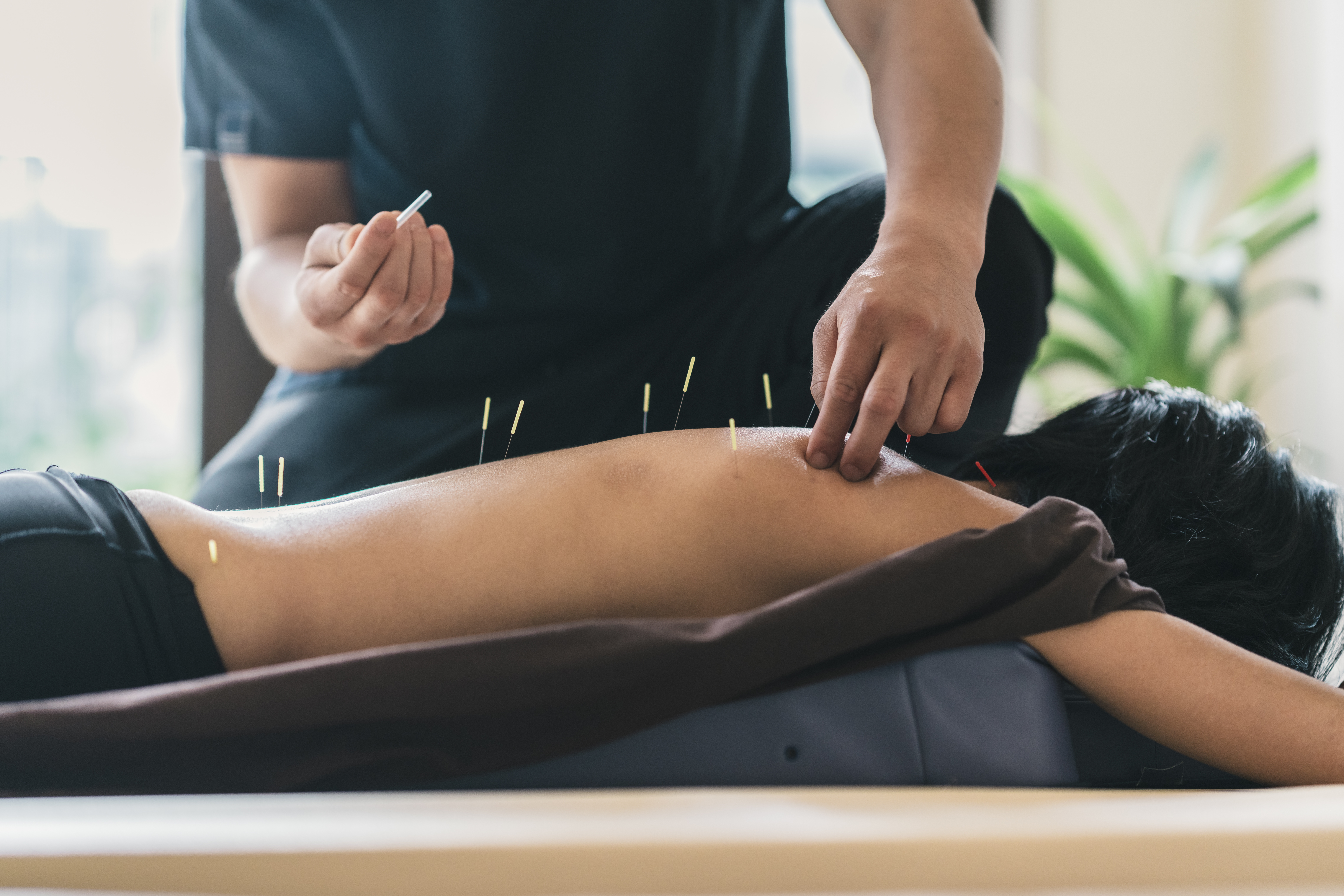Acupuncture is used for a range of health problems, including chronic back pain, headaches and migraines. While it is used as a treatment method in Western medicine and is recognised by organisations such as the NHS, it has roots in Traditional Chinese Medicine (TCM).
In the world of acupuncture, you’ll likely find practitioners who prescribe to either of the two fields: Western (or ‘medical’) acupuncture or traditional Chinese acupuncture. So what’s the difference between these two versions?
Traditional Chinese Acupuncture
Traditional Chinese acupuncture is based on the belief that it can restore the flow of ‘Q’ in an individual’s body. This Qi is an energy that flows throughout everyone, and when there are disruptions to this flow, it can cause health problems and pain. Acupuncture is therefore used to restore balance and reduce blockages or barriers.
In Traditional Chinese Medicine (TCM), acupuncture treatment has been studied and adapted over centuries. Acupuncturists will look at people as a complex energetic being and consider multiple ways to identify and rectify patterns of disharmony throughout the body.
Western Acupuncture
Western, or ‘medical’ acupuncture, is a more targeted evidence-based approach to acupuncture which still uses many of the same techniques.
However, it is only ever administered after a full diagnosis by a qualified medical professional and is most commonly associated with managing specific symptoms of pain and damage to soft tissue.
Western acupuncture will focus on points of the body that lend themselves to pain and tension relief, rather than the overall restoration of energy flow.
Physical therapists, Osteopaths and Sports Therapists may have trained to use specific needling techniques, but are not required to learn from the larger body of work which supports acupuncture within Traditional Chinese Medicine.
Acupuncture in Research
Results from a number of studies on both humans and animals suggest that acupuncture may help ease types of pain that are often chronic, such as lower-back pain, neck pain, and osteoarthritis/knee pain, as well as reduce inflammation.
The NHS and National Institute for Health and Care Excellence (NICE) now recognises that acupuncture works, and has released evidence-based guidelines for those using acupuncture for chronic pain. When conducted by a qualified practitioner, acupuncture is widely considered a safe treatment.
Looking for Western or Chinese Acupuncture in London?
So, where the Western model uses anatomy, physiology and current medical models, Chinese acupuncture relies on a philosophy based on energy flow. However, today, whether you find practitioners of Western or Traditional Chinese Acupuncture in London, or throughout the UK, the actual techniques used will be quite similar.
Here at Acubody, we use our myofascial, anatomical and physiological knowledge along with traditional acupuncture to affect the best results possible for you. To learn more about this subject and the specific approach we use at Acubody, one of our practitioners will be happy to explain everything you need to know. Simply get in touch or visit our centre in central London.








